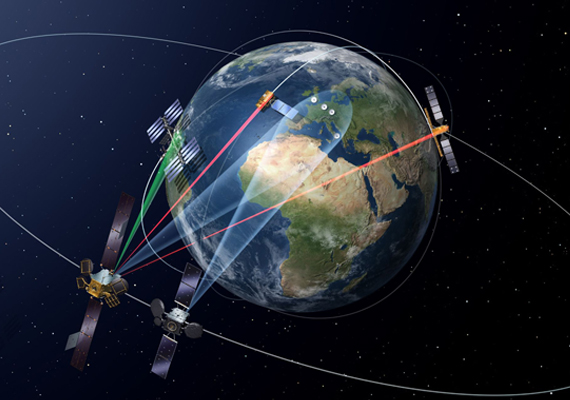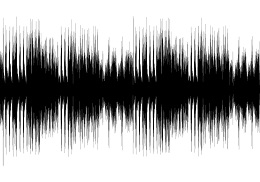
The EDERS (European Data Relay System) can transfer information in real time at 1,8 Gb / s and interconnect two terminals located 75000 kilometres apart. Experts consider it Space’s optical fibre.
19 february 2016
The ESA (European Space Agency) has launched the first system able of transferring data between satellites at a high speed, which in space will be equivalent to the Earth’s optical fibre. The EDRS project can transfer information almost in real time at a speed of 1,8 Gb / s / (Gigabyte per second).
It was last 30 January that the ESA launched the first integrated laser terminal into space on board of the Eutelsat-9B communications satellite. Nowadays, it is in geostationary orbit location at almost 36000 kilometres of height over the terrestrial surface. The European Space Agency foresees that, by next summer, the system will be ready to transfer information from the Earth to the different satellites which hold laser connection.
“The Space Data Highway is no longer science fiction”, stated Evert Dudock, responsible for Airbus Defence and Space a division within the maximum responsible of aviation and space. The EDRS system will “transform satellite communication and unmanned air vehicles; it will also contribute for the European spatial industry to keep updated in technological and industrial services”, he stated.
The NASA already carried out the first tests in June last year within the frame of an OPAL’s experiment (Optical Payload for Lasercomm Science). The test consisted on the transmission of a high-definition video between the ISS (International Space Station) and a receiving station in California in only three seconds instead of the 10 usual minutes.
With its 50 data terabytes per day, the European system would fix the current bottleneck problem generated by the great volume of data transmission. “The laser communication system brings a bandwidth 40 times bigger (than the ones currently used), which means that a Google map from Mars can be done in 9 weeks instead of the previous 9 years”, stated Don Cornwell, head of Advanced Communications and Navigation Technologies at the NASA. One of the main advantages of EDRS is that it could accelerate data recovery of Earth observation and send high-resolution images in very few time to meteorologists, oceanographers and climatologist.
Its functioning is the following: the connection between satellites is done through lasers, while information transmission of the satellite in geostationary orbit location to the receiver in the surface works through radiofrequency. Thanks to this system the problems based on signal interruption of low orbit satellites disappear.
From Airbus Defence and Space they hold that the laser point technology developed by its subsidiary Tesat Spacecom “allows a precise interconnection of laser terminals located 75,000 kilometers apart from each other”. A project which holds great difficulty due to the satellite’s great distance and speed of movement. Evert Dudcok gives the following example: “it would be like riding a sports car in Europe and pointing the laser beam to a €2 coin in New York; it is not only necessary to point precisely, but also to follow the satellite in order to make communication possible”.
The EDRS system will be completed with two other devices which add to the already existing one. The second one will widen the coverage in Europe, Africa, the Middle East and America’s Western Coast and it is expected to start working in 2017. The second one will arrive in 2020 and will give coverage to the Asia-Pacific region. The project’s cost rises to €500 millions.
The Master’s Degree in Telecommunications Engineering prepares students to be able of deploying networks (cable, fibre, radio) and designing, managing, planning and operating networks and telecommunications services.































